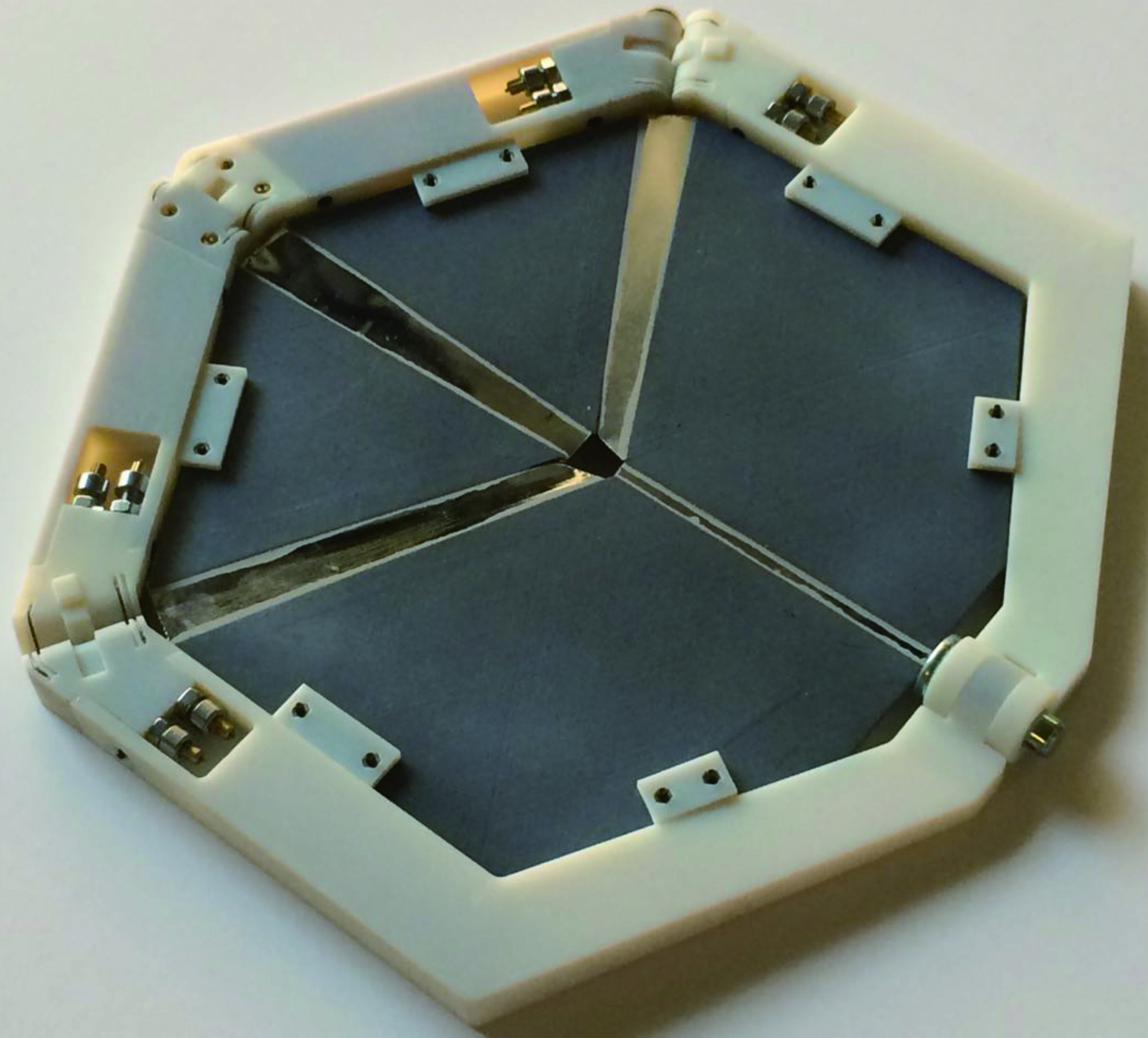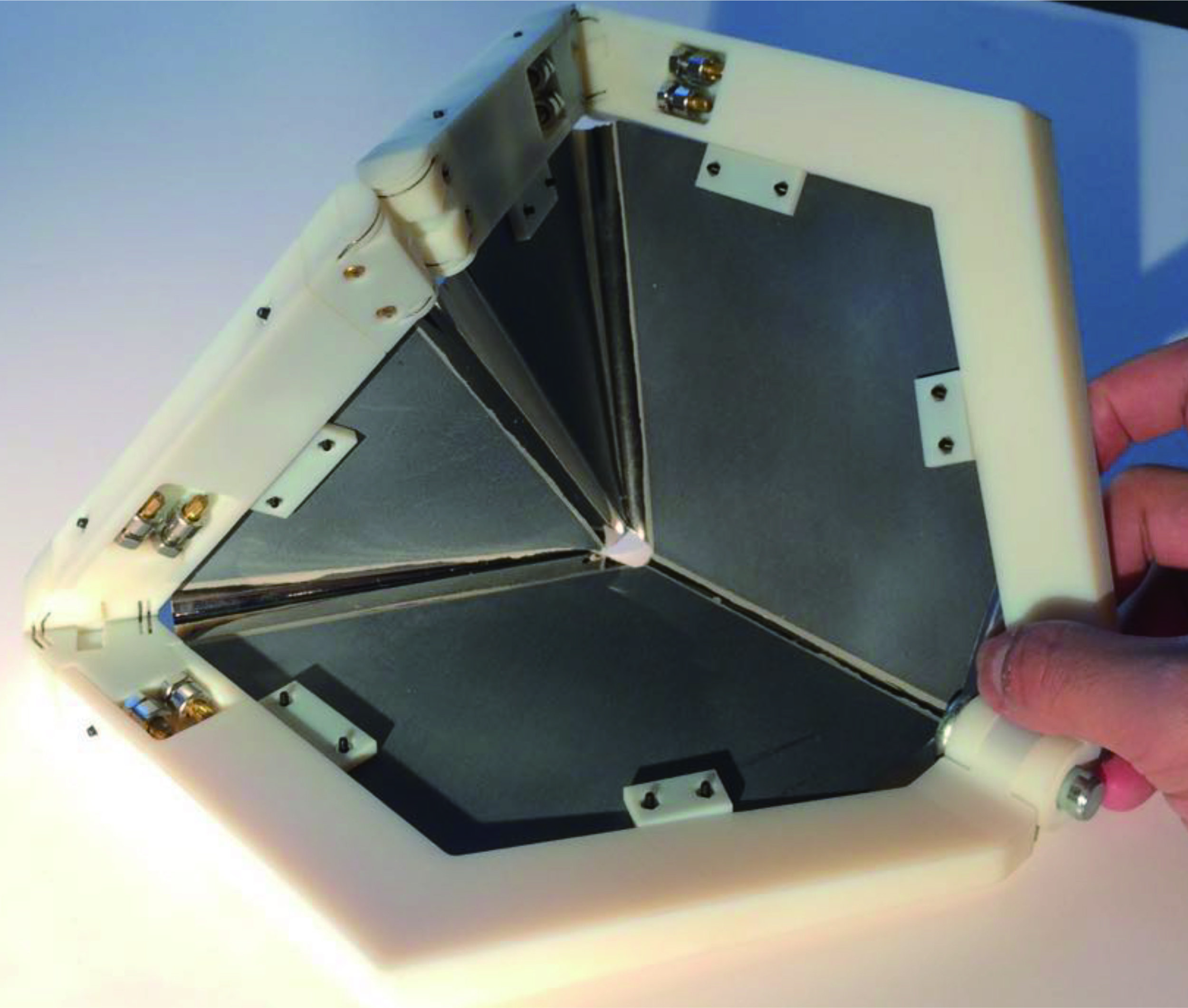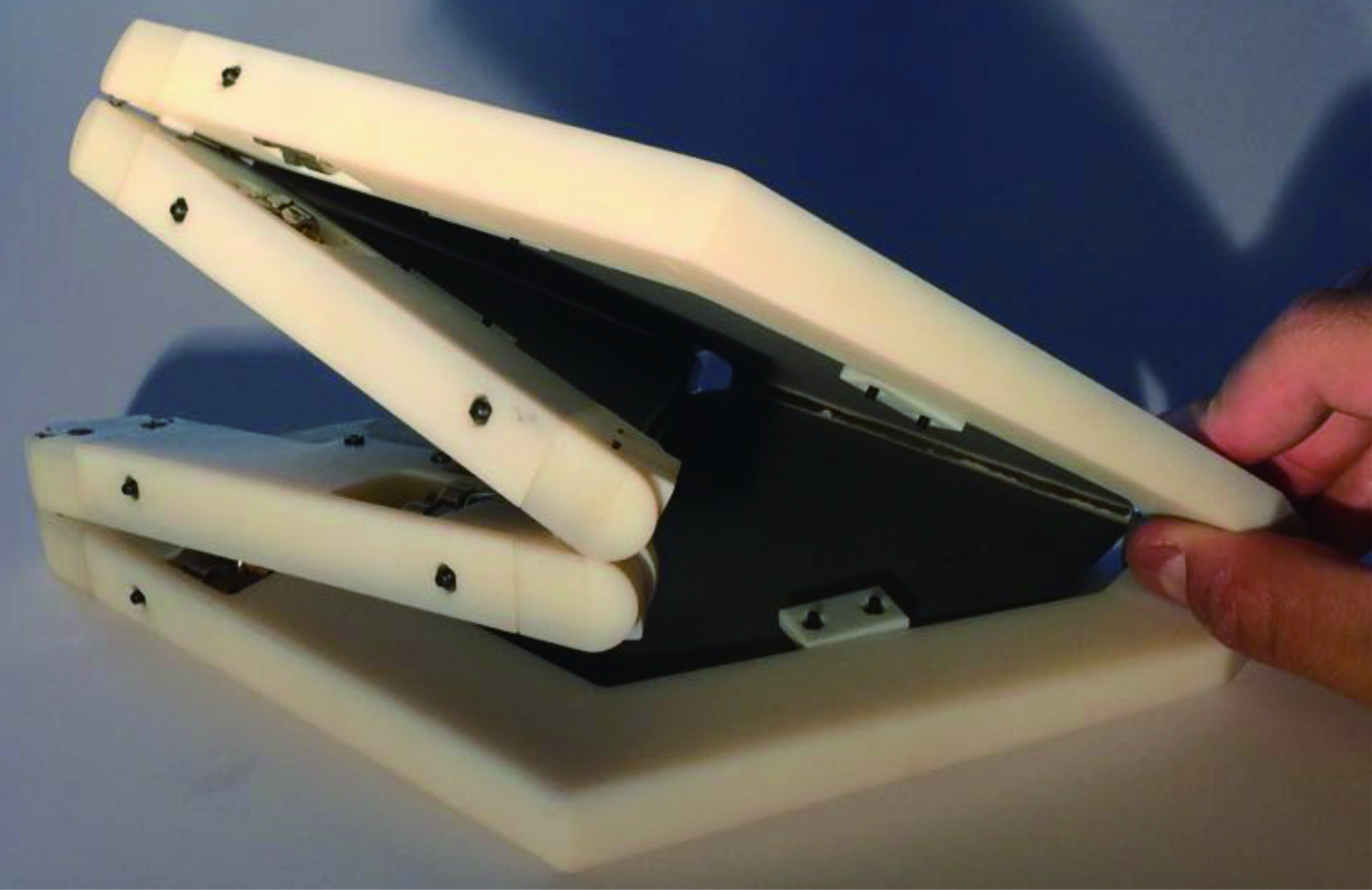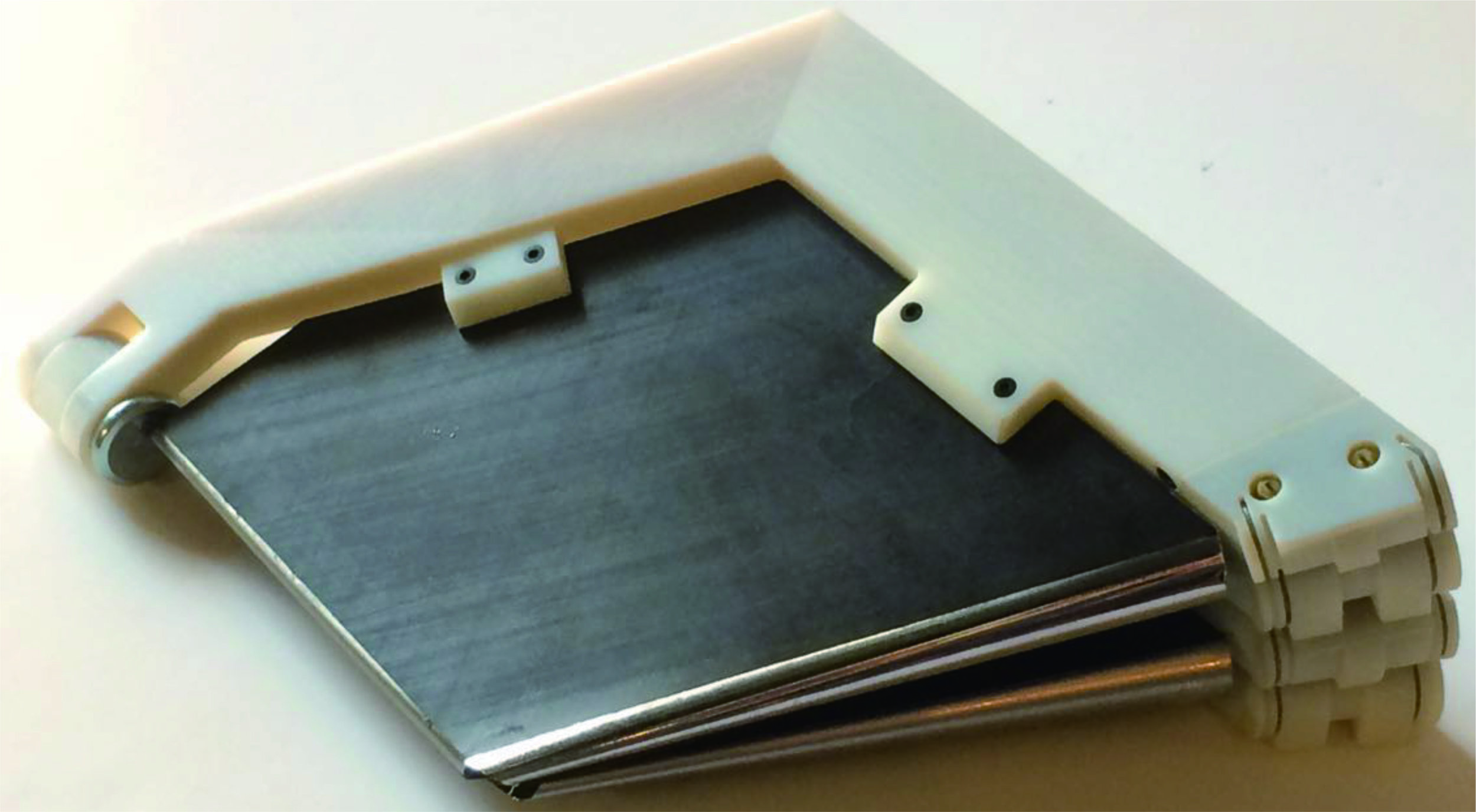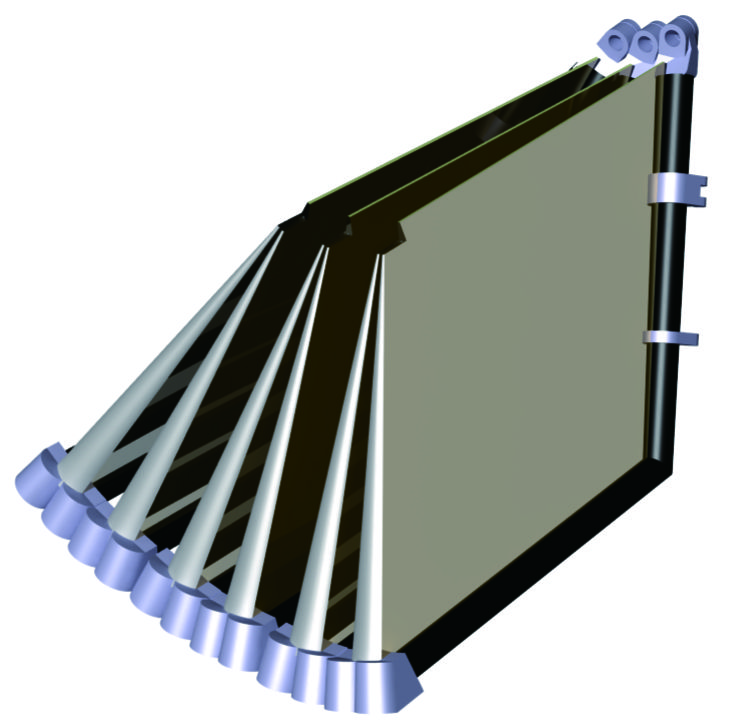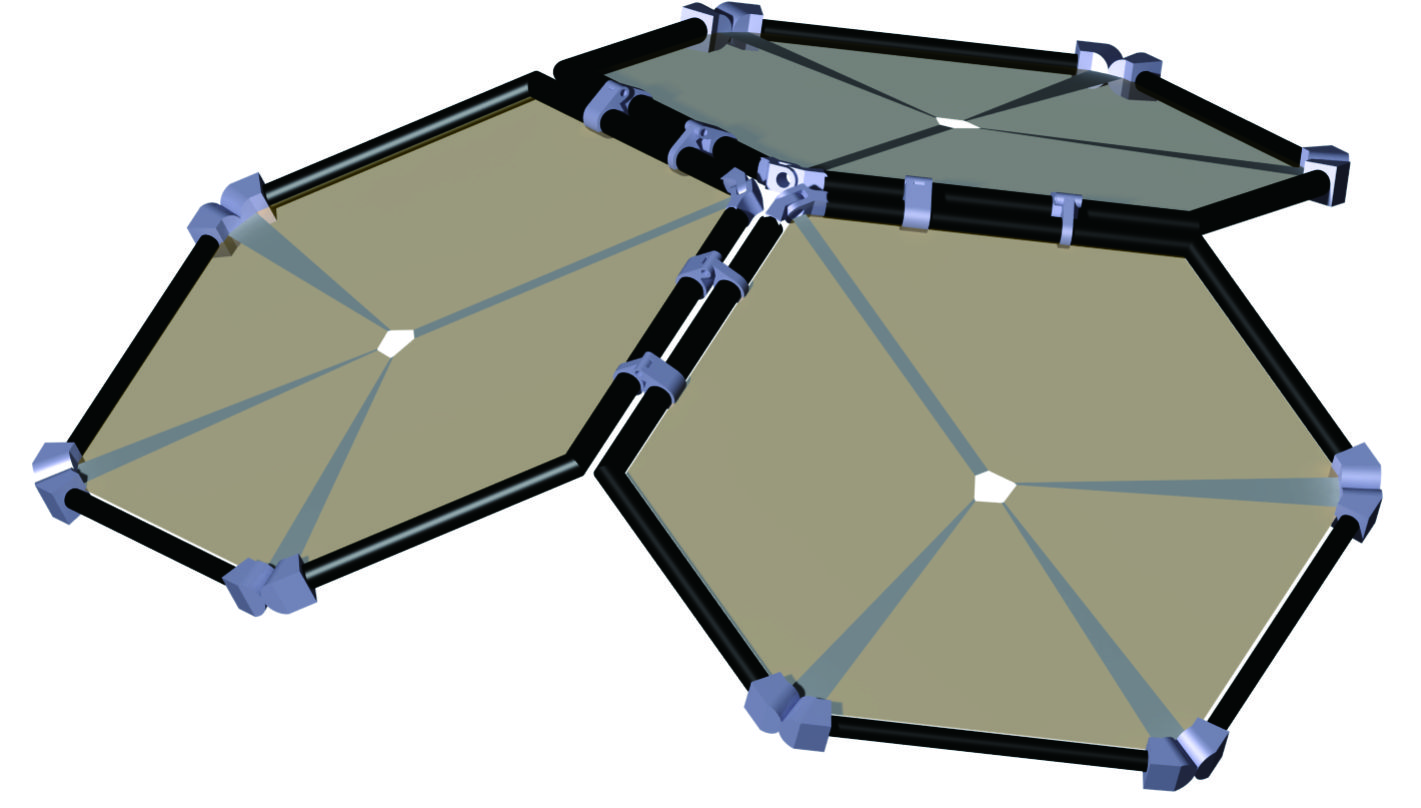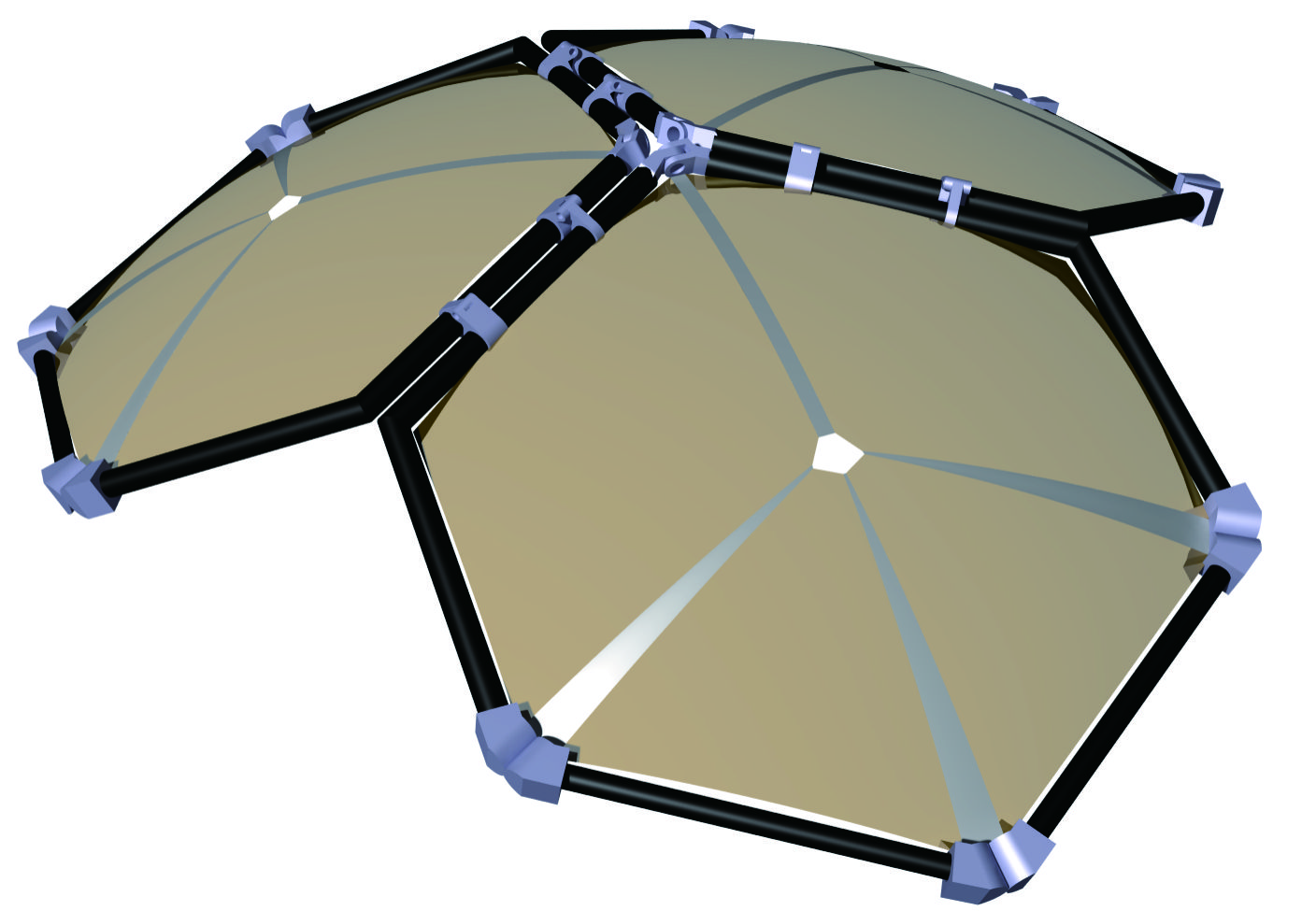Foldable Optical Reflector
Researchers
Yuchen Wei
Sergio Pellegrino
Description
Sparse aperture, thin shell substrate and adaptive optics are three approaches that have been investigated to meet the needs of sensitivity and resolution of future large aperture space telescopes in recent years. However, these missions are often hampered by launch vehicle size. As the latest example, JWST telescope with its 3-petals folding scheme for a 6.5m aperture has reached a glass ceiling imposed by current telescope technology.
Image Credit: http://www.stsci.edu/jwst/ote/wavefront-sensing-and-control
A novel approach to overcome the quandary is by constructing the aperture made of many deployable segments, leveraging the technique of rigid foldable origami. We propose a foldable adaptive optics concept based on a thin creased reflector and an associated mechanism as the support structure whose motion is compatible with the folding scheme. A physical model is displayed below:
Larger apertures could be obtained from tessellations of the basic module. These tessellations could be embedded on both flat and spherical planes, and are characterized by high deployment ratio. All adjacent modules are connected by revolute hinges.
The concepts build on the maturing technologies developed at SSL: high precision CFRP thin shell substrate, self-locking hinge, piezo-based thin shell shape control and associated numerical/experimental validation techniques.
The concepts could ride to space in stowed state, meanwhile possess high post-deployment figure precision and retains focoal length adjustability. They're potentially suitable for future deployable space telescopes and scalable to larger sizes.
Publications:
Wei, Y., and Pellegrino, S. (2017). Modular foldable surfaces: a novel approach based on spatial mechanisms and thin shells. SciTech 2017. Grapevine (TX), AIAA (pdf).


